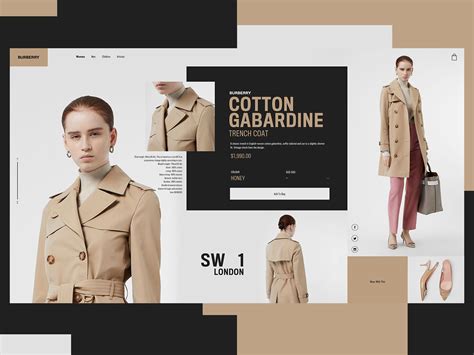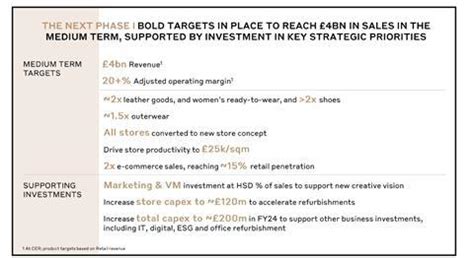burberry operation study | burberry plc corporate burberry operation study This case study serves as an inspiration for marketers to embrace digital innovation and explore new possibilities to drive brand growth and success. Jennifer E Nashold is Judge at Wisconsin Court of Appeals. See Jennifer E Nashold's compensation, career history, education, & memberships.
0 · burberry website optimization
1 · burberry strategy
2 · burberry plc strategy
3 · burberry plc corporate
4 · burberry mobile optimization
5 · burberry clothing history
6 · burberry business plan
7 · burberry business model
D&B Worldwide Network: Copyright SIA "Dun & Bradstreet Latvia" Riga 2003-2024
This case study serves as an inspiration for marketers to embrace digital innovation and explore new possibilities to drive brand growth and success. Burberry has delivered on this new digitally-focused business model in two key ways: (1) by going all-in on social media and mobile marketing and (2) by creating a model for .
The case analyses how Burberry developed and executed a strategy centered on millennial consumers, British appeal and distinctive digital capabilities, transforming the . After proving the concept of a tech-led, luxury fashion and retail enterprise, with personalization and direct marketing initiatives, Burberry has spoken about its plans to roll out . The case analyses how Burberry developed and executed a strategy centered on millennial consumers, British appeal and distinctive digital capabilities, transforming the .
Our vision is to realise Burberry’s potential as the Modern British Luxury brand. We have a clear strategy to achieve this across brand, product and distribution, supported by operational . An iconic British high-end clothing brand, Burberry, is the chosen case study to explore the recent move towards reshoring because its changes of leadership, business model . The company says it is confident of achieving its target of using 100% renewables-generated electricity by next year. Arguably even more notable is Burberry’s approach to Scope 3 emissions. The company had originally set .
Our longer-term ambition is to develop Burberry into a £5 billion revenue brand. This will drive significant operating leverage, increasing our adjusted operating profit margin well above 20%. Building on a very strong platform, we have identified opportunities across the business to unlock growth. The key elements of our plan are as follows: This case study serves as an inspiration for marketers to embrace digital innovation and explore new possibilities to drive brand growth and success. Lessons learnt: Making the Burberry experience consistent. Ahrendts made the first change by centralizing the design process. In a Harvard Business Review article, she recalls going around the US, UK, and Hong Kong to see what the design teams created and what the stores looked like.
Burberry has delivered on this new digitally-focused business model in two key ways: (1) by going all-in on social media and mobile marketing and (2) by creating a model for the ultimate in-store digital experience. But wait, why is digital so important?

burberry website optimization
The case analyses how Burberry developed and executed a strategy centered on millennial consumers, British appeal and distinctive digital capabilities, transforming the sesquicentennial brand into an international luxury powerhouse. After proving the concept of a tech-led, luxury fashion and retail enterprise, with personalization and direct marketing initiatives, Burberry has spoken about its plans to roll out AI tech into. The case analyses how Burberry developed and executed a strategy centered on millennial consumers, British appeal and distinctive digital capabilities, transforming the sesquicentennial brand into an international luxury powerhouse.Our vision is to realise Burberry’s potential as the Modern British Luxury brand. We have a clear strategy to achieve this across brand, product and distribution, supported by operational excellence, people and talent, and values and sustainability.
An iconic British high-end clothing brand, Burberry, is the chosen case study to explore the recent move towards reshoring because its changes of leadership, business model and evolving supply chain strategy from 1997 to early 2016 provide a timely and pertinent context. The company says it is confident of achieving its target of using 100% renewables-generated electricity by next year. Arguably even more notable is Burberry’s approach to Scope 3 emissions. The company had originally set itself a target of reducing the emissions from its supply chain by 30% by 2030.
Our longer-term ambition is to develop Burberry into a £5 billion revenue brand. This will drive significant operating leverage, increasing our adjusted operating profit margin well above 20%. Building on a very strong platform, we have identified opportunities across the business to unlock growth. The key elements of our plan are as follows:
This case study serves as an inspiration for marketers to embrace digital innovation and explore new possibilities to drive brand growth and success. Lessons learnt: Making the Burberry experience consistent. Ahrendts made the first change by centralizing the design process. In a Harvard Business Review article, she recalls going around the US, UK, and Hong Kong to see what the design teams created and what the stores looked like. Burberry has delivered on this new digitally-focused business model in two key ways: (1) by going all-in on social media and mobile marketing and (2) by creating a model for the ultimate in-store digital experience. But wait, why is digital so important?The case analyses how Burberry developed and executed a strategy centered on millennial consumers, British appeal and distinctive digital capabilities, transforming the sesquicentennial brand into an international luxury powerhouse.
After proving the concept of a tech-led, luxury fashion and retail enterprise, with personalization and direct marketing initiatives, Burberry has spoken about its plans to roll out AI tech into. The case analyses how Burberry developed and executed a strategy centered on millennial consumers, British appeal and distinctive digital capabilities, transforming the sesquicentennial brand into an international luxury powerhouse.Our vision is to realise Burberry’s potential as the Modern British Luxury brand. We have a clear strategy to achieve this across brand, product and distribution, supported by operational excellence, people and talent, and values and sustainability. An iconic British high-end clothing brand, Burberry, is the chosen case study to explore the recent move towards reshoring because its changes of leadership, business model and evolving supply chain strategy from 1997 to early 2016 provide a timely and pertinent context.

burberry strategy
DNO Waveform Cable. Superlec supply 0.6/1kV voltage rated LV Waveform cables featuring 3 or 4 core solid segmented aluminium conductors. XLPE insulated with PVC or LSZH outer sheath, LV Waveform cables are service cables, commonly used in final connections to properties. Conforms generally to BS7870 and IEC/EN 60228. DNO .
burberry operation study|burberry plc corporate


























